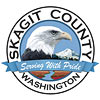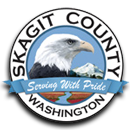
September 10, 2021
Health Department issues Warning for toxic blue green algae at Lake Campbell
SKAGIT COUNTY — A water sample taken from the east side of Campbell Lake on September 7, 2021 has shown significant levels of the blue green algae toxin Microcystin. The result from the King County Environmental Lab is 21.9 micrograms per liter of Microcystin per liter.
According to the Washington State Department of Health, the level of public health concern for microcystin is 8 micrograms microcystin per liter. The level of microcystin toxin in Lake Campbell has triggered the posting of Warning Signs around the lake.
Microcystin is a chronic liver toxin and can cause rash and other symptoms on exposure. The toxin will be highest within areas of scum and intense color in the water. Short-term exposure is not expected to cause immediate health impacts, but until follow up samples show the toxin has cleared, please follow the Warning Notice for Campbell Lake, which includes:
- Do not swim or water ski
- Do not drink lake water
- Keep pets and livestock away
- Clean fish well and discard guts
- Avoid areas of scum while boating and recreating
Other Blue Green Algae Lake Updates:
Beaver Lake has visual evidence of a significant bloom from sample collected on September 7, 2021, but toxin levels remain below the Warning level. Toxin levels can change quickly so users of Beaver Lake should avoid areas of scum and intensely colored water. A Caution sign has been posted at the public access boat ramp at Beaver Lake.
Pass Lake in the Skagit County portion of the park remains closed to all users until further notice due to high Anatoxin-a levels. The most recent sample from September 7, 2021 tested 692 micrograms of Anatoxin-a per liter. The state action level is 1 microgram per liter.
For questions concerning algae blooms at lakes within Skagit County, please contact Samantha Russell at eh@co.skagit.wa.us or call (360) 416-1500. You can also visit the Washington State Department of Health website at http://www.doh.wa.gov/CommunityandEnvironment/Contaminants/BlueGreenAlgae and the Northwest Toxic Algae site for test results at https://www.nwtoxicalgae.org/. |




















